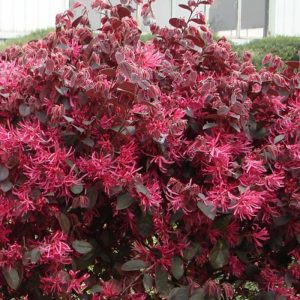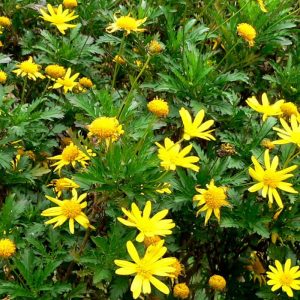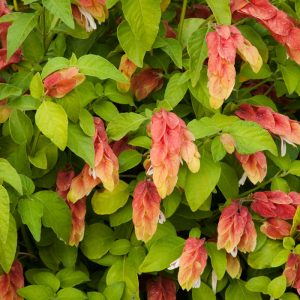Color, Color, Color!
At the Garden Center we frequently hear “I want to add color!”
To add color to your garden, try layering in color- using cold hardy plantings with colored foliage or variegated foliage as your first layer, such as Loropetalum, Arbicola Trinette or Jack Frost Ligustrum. Add in flowering shrubbery like Roses, Thyrallis, Plumbago, Texas Sage, Oleanders (the list has many choices) as a second layer of plants that will bloom for months on end.
Add in more color with some semi-tropical plants but in smaller quantities so when winter damaged you won’t have large areas of “burnt” plants. Some great choices are Hibiscus, Allamanda, Firebush, Jatropha, Crotons & Ti plants. Your third layer would be perennials and annuals such as some of the perennials mentioned below!
Finally, add in items of interest such as bird baths, fountains, benches, statues, garden flags- whatever appeals to you and I promise your garden will be a show stopper!! Fertilize blooming plants regularly with 6-8-10 Sure Gro Bloomer.
Perennial Flowers
Perennial flowers come in all sizes, shapes and colors! Everyone loves flowers and now is a great time for creating a perennial flower bed or adding to an existing one. Perhaps adding flowers that attract butterflies and hummingbirds would be an idea.
Try planting Knock Out Roses, Drift Roses, Milkweed, Cigar Plant, Gazanias, Gaillardia, Salvias, Pentas, Lantana, Bush Daisies, Plumbago, Guara and Firecracker.
Hummingbirds are Back and Butterflies are becoming more abundant daily!
Artificial feeders will attract hummingbirds. Because feeders can be placed almost anywhere, they increase your opportunities to view hummers from inside your house. However, feeders should not be the sole source of food provided. The sugar solution may appeal to the hummingbirds’ sweet tooth, but it provides little nourishment. Nectar is much more than just water and sugar. If you do use a feeder do not use red food coloring…just sugar and water. Be sure to change the sugar solution every couple to three days as it will go bad in the heat quickly.
Did you know that many hummingbird plants are also butterfly friendly? Planting a few butterfly friendly plants could also entice in some hummingbirds. Your garden doesn’t have to be huge- even a few plants will help set up a Butterfly/Hummingbird garden. Try to mix in many colors as butterflies are attracted to many colors. Hummingbirds also like many varieties however reds and oranges seem to be the colors of choice for them.
If you want to try to encourage Monarch butterflies to your garden, you can plant their host plant (the one they will lay their eggs on ) and in this case that would be Milkweed. There are over 20 different varieties of Native Milkweed in Florida. This is the only plant that monarchs will lay their eggs on. You do not have to have host plant to have them visit your yard though. Providing different types of flowers that are tubular to flat surfaced will encourage the butterflies in. If you do choose to have Milkweed in your garden to encourage Monarchs to visit, remember that it is very important to cut your milkweed down by Thanksgiving, at the latest. You do not want to encourage Monarchs to stick around instead of migrating back to Mexico in the winter.
Remember to avoid using insecticides in your butterfly gardens and definitely plan on adding a water source for them.
Adding a water source is easy- get a saucer for a planter or even a pie plate. Add a layer of sand, then a layer of compost, followed by another layer of sand. Add in some small stones for the butterflies to perch on. Keep the container moist. You may need to add water fairly frequently depending on the rain situation as the shallow pan will dry out fairly quickly. The compost adds some minerals for the butterflies-specifically salt which is very important to male butterflies.
Here are a few of the plants that are both butterfly and hummingbird friendly:
Perennials: Red Porter Weed, Salvia (many varieties), Bat Face Cuphea, Cigar Plant, Shrimp Plant, Lantana,
Shrubs: Firebush, Bottlebrush, Firespike, Firecracker Plant,
Trees: Bottlebrush, Citrus flowers
Vines: Coral Honeysuckle, Japanese Honeysuckle, Passionvine


